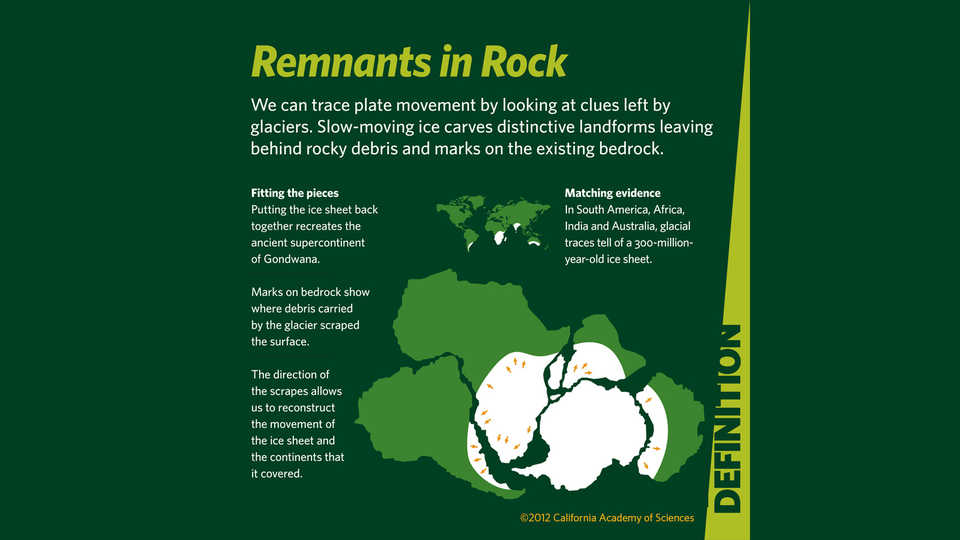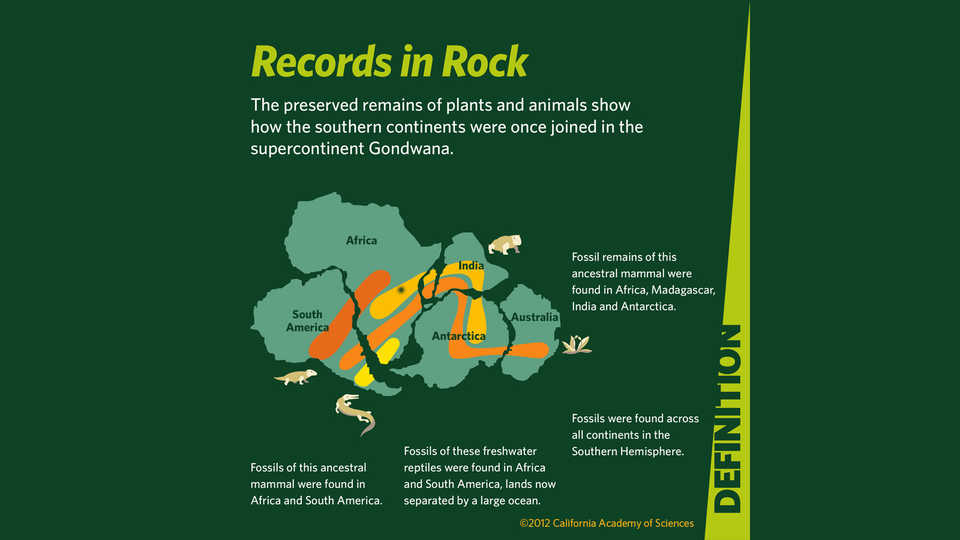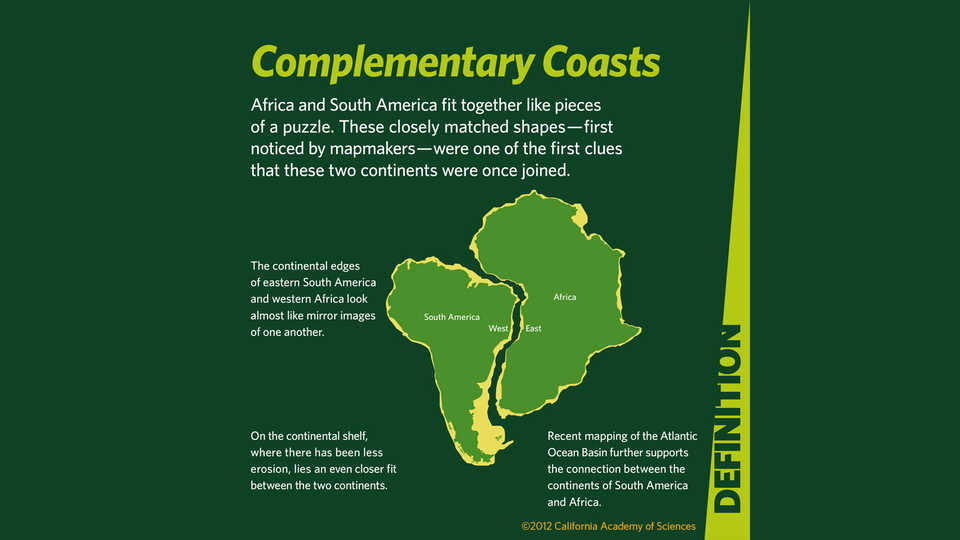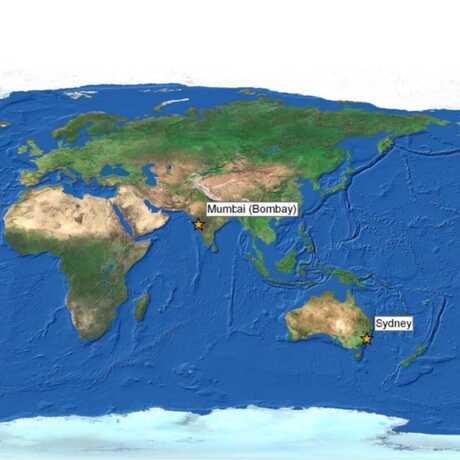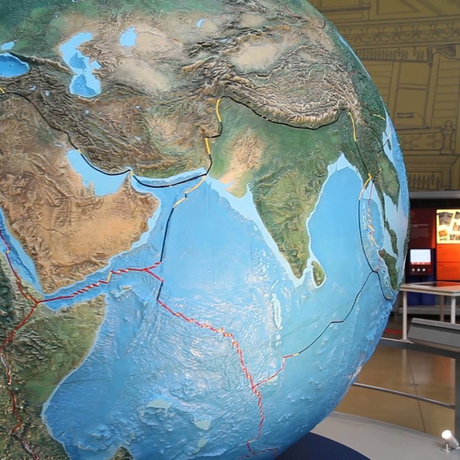Get a new perspective on earthquakes with this rich collection of multimedia resources. You'll learn why earthquakes happen, how they've shaped the Bay Area, and what you can do to prepare for the next one.
DIY Science
Evidence of Plate Tectonics
Modern continents hold clues to their distant past. Evidence from fossils, glaciers, and complementary coastlines helps reveal how the plates once fit together.
Fossils tell us when and where plants and animals once existed. Some life "rode" on diverging plates, became isolated, and evolved into new species. Other life dispersed to new areas as continents reconnected, oceans narrowed, or chains of volcanic islands formed. Finding identical or similar fossils in areas separated by vast distances were some of the first clues that scientists used to reconstruct past plate movement. This distribution of fossils led to theories that the southern continents were once joined in a supercontinent called Gondwana.
Similar geologic formations on different continents show historic land connections. Antarctica’s mountains are an extension of South America’s Andes. If Southern Hemisphere continents were reassembled into a single landmass, glacial remnants in Africa and India would realign.
This post is part of Exploring Earthquakes, a rich collection of resources co-presented by the California Academy of Sciences and KQED. This material is also available as a free iBooks textbook and iTunes U course.
Share This
Find out what you can do right now to protect yourself in the event of an earthquake. You'll be happy you did.
Ideas for using videos, articles, and infographics about earthquakes in the classroom.
